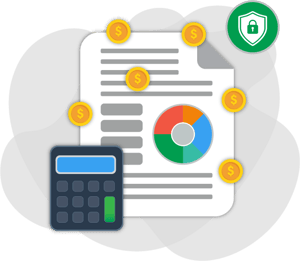Monitor Contributions and Tax Treatment
Our platform allows you to monitor your contributions, broken down by type. For example pre-tax contributions are tax-deductible, but withdrawals in retirement are taxed as income.
Roth Solo 401k contributions are made in after-tax dollars and are not tax deductible. However, withdrawals in retirement are completely tax-free. Proper recordkeeping is important to make sure you get the tax break at retirement.
Solo 401k Contribution Limits
2024 - 2025 Employer Contribution Limits
Total contributions to a participant’s account, not counting catch-up contributions (50 or older), may not exceed the maximum allowed for the tax year. The maximum is the lesser of 25% of an employee's compensation up to the maximum limit of $69,000 in 2024 and $70,000 in 2025. Employees and employer contributions combined may not exceed this limit.
2024 - 2025 Employee Elective Deferrals/Employee Contributions
The maximum an employee can contribute to a Solo 401k from employment income is $23,000 in 2024 and $23,500 in 2025 with an additional catch-up of $7,500 if over age 50 in 2024 and up to $11,250 in 2025 if age 60-63. This is all tracked and calculated by our platform.



![COMPARE FEES [TEMPLATE]](https://no-cache.hubspot.com/cta/default/474828/26d7ab68-a27c-45bd-b4c3-ddd012f7a936.png)








